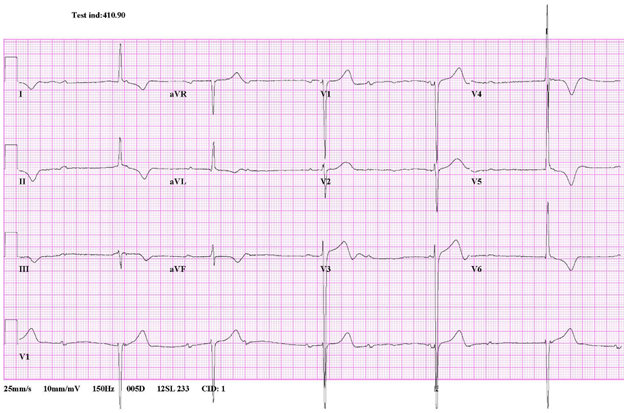Arrhythmias Quiz 3
Quiz Summary
0 of 10 questions completed
Questions:
- 1
- 2
- 3
- 4
- 5
- 6
- 7
- 8
- 9
- 10
The results of your practice test are waiting! Just fill in your email address in the box below, and we will share your results. You’ll only need to enter your email one time. After taking your next practice exam, you’ll receive your results as soon as you click on “Submit.”
Once you pass five practice tests, a 20% discount coupon will immediately be sent to the email address you provided.
|
You must specify an email address. |
You have already completed the quiz before. Hence you can not start it again.
Quiz is loading…
You must sign in or sign up to start the quiz.
You must first complete the following:
Results
Time has elapsed
Try Again. You didn’t get a passing score.Congratulations! You Passed.
You got 0 out of 0 correct and scored 0. Review your incorrect answers and try again.
Earned Point(s): 0 of 0, (0)
0 Essay(s) Pending (Possible Point(s): 0)
Categories
- Not categorized 0%
Earn a 20% Discount on Your Next Certification Course!
ACLScertification.org is proud to offer a 20% discount to students who successfully pass 5 of our practice tests in one sitting. Currently, you have passed 0 of the 5 required tests. Start testing your skills and earning your discount now in our Practice Exam Section.
- 1
- 2
- 3
- 4
- 5
- 6
- 7
- 8
- 9
- 10
- Answered
- Review
-
Question 1 of 10
1. Question
1. A patient presents to the emergency department with a report of palpitations and feeling faint. Vital signs include a heart rate of 155 bpm, blood pressure of 100/80 mm Hg, temperature of 36.8°C, and oxygen saturation of 93%. What is your next course of action?
CorrectIncorrect -
Question 2 of 10
2. Question
2. You are monitoring a patient who has recently been stabilized 2 hours after having a wide complex tachyarrhythmia with a pulse. He is on a maintenance infusion of amiodarone 1 mg/minute. His blood pressure was 140/80 mm Hg 15 minutes ago but is now 100/60 mm Hg. Which of the following will NOT remedy the problem?
CorrectIncorrect -
Question 3 of 10
3. Question
3. A patient tells you that he has been diagnosed with a “slow heart” and has had it for the past year. An ECG shows the following tracing:

What is your interpretation of this ECG finding?
CorrectIncorrect -
Question 4 of 10
4. Question
4. A patient was successfully defibrillated, terminating pulseless VT. One minute later, the patient again goes into VT and loses his pulse. A shock should be delivered at:
CorrectIncorrect -
Question 5 of 10
5. Question
5. A patient who is hypotensive secondary to bradycardia is unresponsive to atropine. Which one of the following drugs, if any, can be given to this patient?
CorrectIncorrect -
Question 6 of 10
6. Question
6. A patient with bradycardia that has suddenly developed hypotension and chest pain has not improved after receiving repeated doses of atropine and epinephrine. What other alternative treatments will potentially improve the patient’s condition?
CorrectIncorrect -
Question 7 of 10
7. Question
7. A patient with symptomatic bradyarrhythmia has the following 12-lead ECG tracing:

What is your diagnosis?
CorrectIncorrect -
Question 8 of 10
8. Question
8. A stable patient has a regular narrow complex tachycardia. The indicated treatment is:
CorrectIncorrect -
Question 9 of 10
9. Question
9. Adenosine will terminate atrial flutter.
CorrectIncorrect -
Question 10 of 10
10. Question
10. After a dose of adenosine 6 mg IV rapid push for the treatment of paroxysmal supraventricular tachycardia, the patient’s symptoms have not improved. What is the next therapy of choice?
CorrectIncorrect